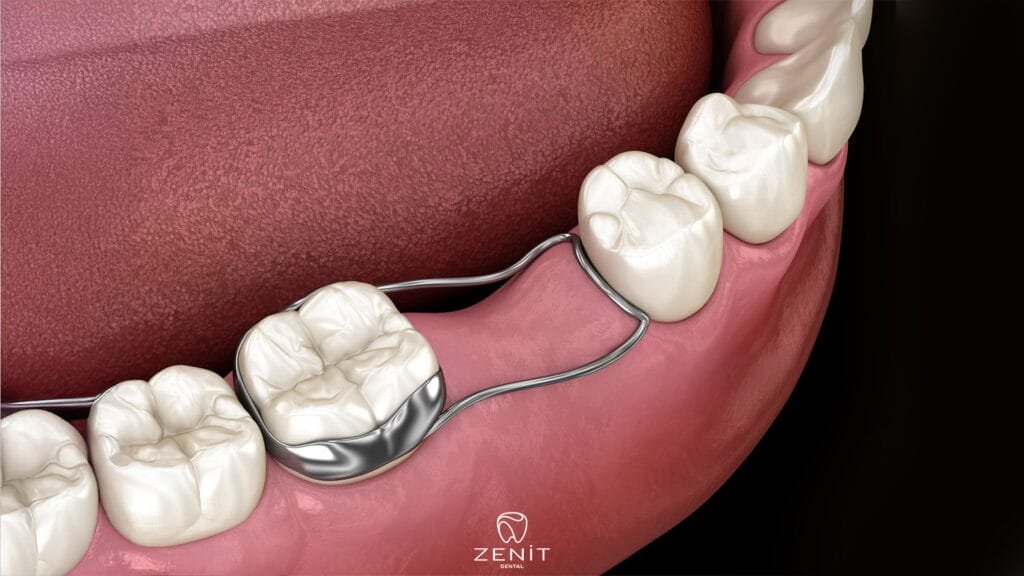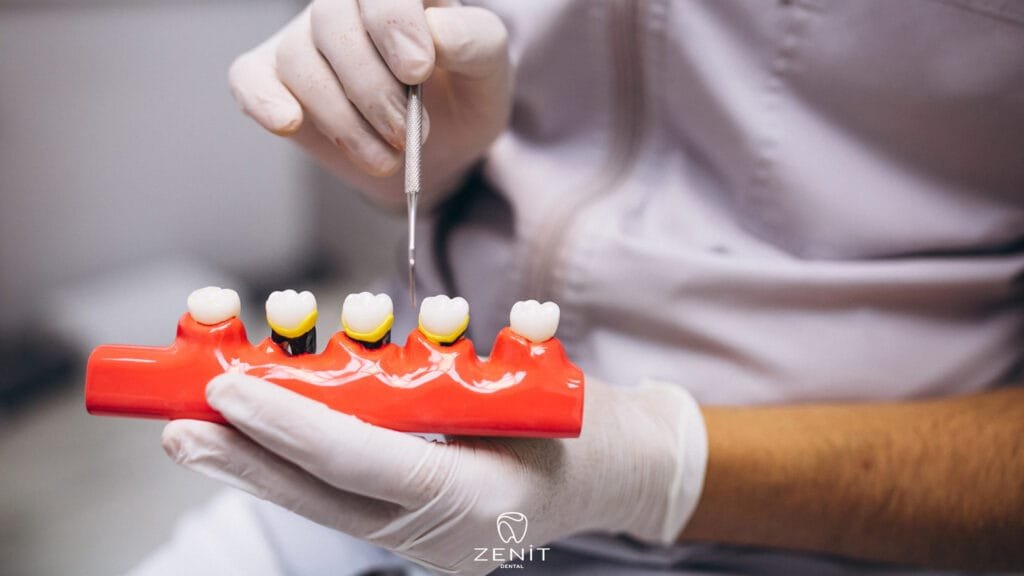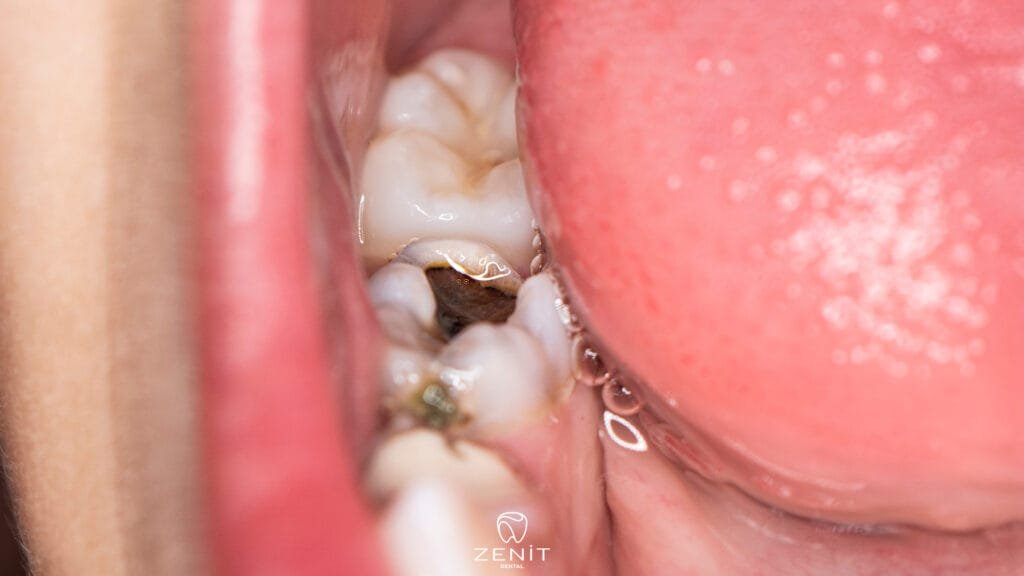What is a Placeholder
Dental health isn’t just the key to a beautiful smile; it’s also an essential part of our overall health. Healthy teeth play a crucial role in many areas, from proper nutrition and speech development to self-confidence and quality of life. Particularly during childhood, careful attention to oral and dental health can help prevent many future orthodontic and dental problems.
During this period, primary teeth, while seemingly “temporary,” are actually guides for permanent teeth. They play critical roles in ensuring a child’s chewing function, contributing to speech development, and supporting the proper development of the jawbones. However, in some cases—due to decay, trauma, or infection—deciduous teeth can be lost earlier than expected.
This is where the dental procedure called “space maintainer” comes into play. Space maintainers maintain the space left by prematurely lost primary teeth, allowing the permanent teeth to erupt in the correct position. This prevents future tooth misalignments, crowding, and orthodontic problems.
What is a Space Maintainer?
Dental development in children is crucial not only for aesthetic reasons but also for chewing, speaking, and the proper development of the jaw. During this process, primary teeth act as guides for the permanent teeth to find their place. However, sometimes these primary teeth can be lost prematurely due to decay, falling, or trauma. In such cases, a special dental appliance called a “space maintainer” comes into play.
A space maintainer, simply put, is a small but effective aid that protects the space of a prematurely lost primary tooth. As the name suggests, its primary function is to “hold the space.” In other words, when a primary tooth is prematurely extracted or falls out, the space left by the primary tooth is preserved for the permanent tooth that will emerge. This prevents the surrounding teeth from shifting into that space. If this space is not maintained, the adjacent teeth will gradually move into that space, narrowing the space for the permanent tooth to erupt. As a result, the permanent tooth will emerge in an incorrect position, becoming crowded, and potentially requiring orthodontic treatment in the future.
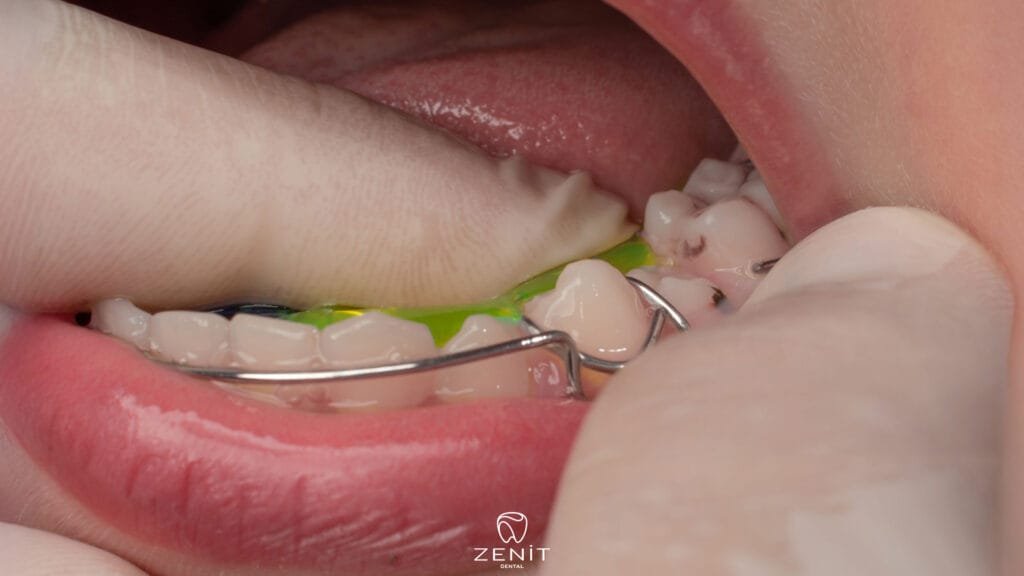
Space maintainers help protect a child’s dental health by preventing future tooth misalignments. While they may seem like a small appliance, they actually have a significant impact, potentially preventing lengthy braces in the future.
Some parents might think, “Baby teeth are temporary anyway; it doesn’t matter if they fall out early.” However, this isn’t the case at all. One of the functions of baby teeth is to make room for the permanent teeth below and to prepare the gums and jaw structure in that area. In other words, each baby tooth acts as a guide for the permanent tooth to erupt at the right time and in the right position. When this guide is lost prematurely, the system’s balance is disrupted. A space maintainer restores this balance and maintains the natural pattern of tooth development.
Why Are Space Maintainers Used?
Space maintainers play a crucial role in pediatric dentistry. The loss of teeth during childhood directly impacts not only current chewing function but also future tooth alignment and jaw development. The primary purpose of space maintainers is to maintain the space left by prematurely lost primary teeth, allowing permanent teeth to erupt in the correct position. While seemingly simple, this small appliance can prevent major orthodontic problems in the future.
In children, the period between the ages of 6 and 12 is generally the most active period of tooth change. During this age, primary teeth fall out one by one, while permanent teeth begin to emerge. However, sometimes this process doesn’t proceed naturally. A primary tooth may need to be extracted early due to reasons such as decay, loss, trauma, or infection. In these cases, if the space surrounding that tooth isn’t maintained, the surrounding teeth will gradually shift into that space.
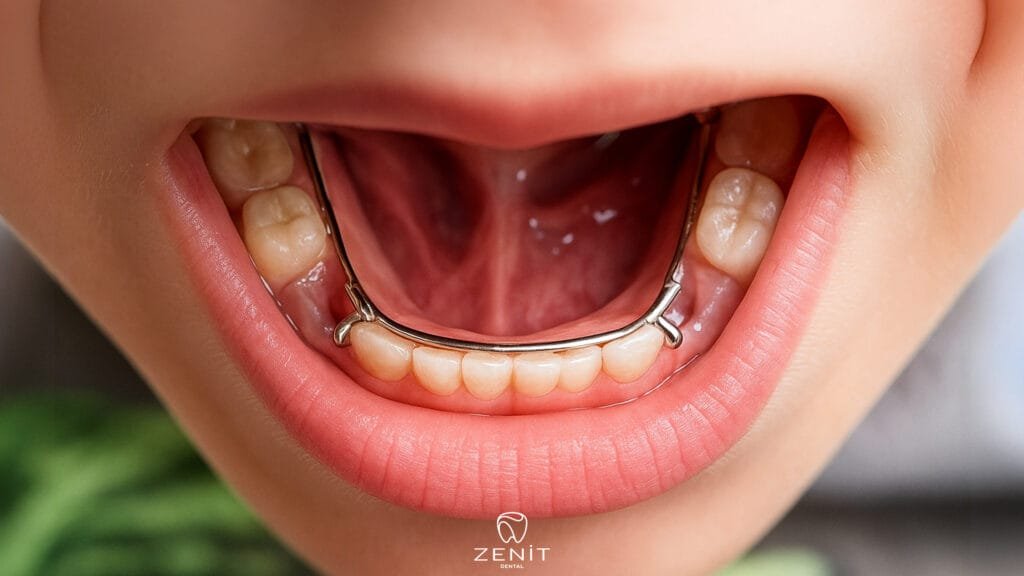
If this condition goes unnoticed, there won’t be enough room for the permanent teeth to emerge. Consequently, teeth can erupt crookedly, overlapping each other, or at the wrong angle. This increases the need for orthodontic treatment (such as braces) in the future. In some cases, not only aesthetics but also chewing and speech functions can be negatively affected.
By maintaining the space created by the premature loss of a primary tooth, it prevents neighboring teeth from shifting into this space. This way, when the permanent tooth arrives, it will emerge precisely where it should. This way:
- Crooked teeth are eliminated, and they are aligned properly.
- Bite disorders are prevented, and the jaw joint functions properly.
- The need for orthodontic treatment is reduced or eliminated entirely.
- Jaw development continues in a balanced manner, and aesthetic appearance is maintained.
In fact, space maintainers can be thought of as a type of “preventive measure.” In other words, when a dentist inserts this appliance into a child’s mouth, they prevent the need for future braces, lengthy orthodontic adjustments, and jaw imbalances. Therefore, using a space maintainer in children experiencing premature tooth loss is not just an aesthetic choice; it’s an important treatment step that protects their long-term dental health.
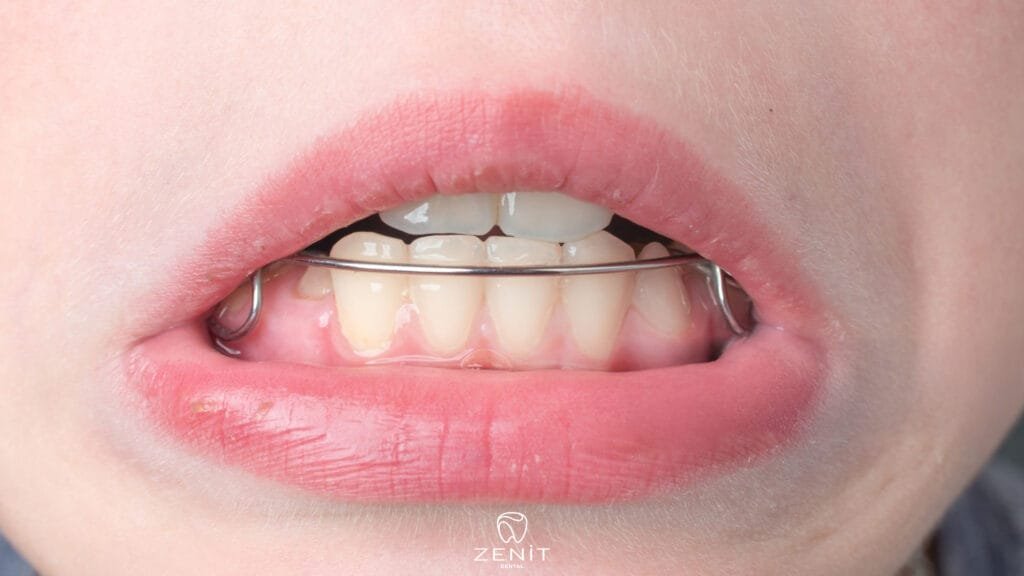
When Are Space Maintainers Necessary?
Space maintainers are not routinely used for every lost baby tooth. When making this decision, the dentist considers many factors, including the child’s age, tooth development, and the tooth being lost. However, space maintainers are generally used when a baby tooth is lost prematurely, before the permanent tooth is ready to erupt.
When your child’s baby tooth is extracted prematurely due to decay, trauma, or infection, the space for that tooth is left empty. If this space is not maintained for an extended period, the surrounding teeth will gradually shift towards that space, preventing the subsequent permanent tooth from emerging properly. In such cases, the dentist may recommend a space maintainer to protect the space.
However, a space maintainer is not required in every case. In some cases, the permanent tooth may be very close to eruption. In such cases, the dentist may choose to simply monitor the process. Similarly, in some tooth areas (especially the front teeth) the risk of the space closing is low. In such cases, a space maintainer may not be necessary.
The main factors a dentist considers when deciding on a space maintainer are:
- Location of the Lost Tooth: Back teeth play a significant role in chewing, and neighboring teeth are more prone to shifting. Therefore, a space maintainer is recommended more frequently in the posterior region.
- Age of the Child: If primary teeth are lost at a young age and the permanent tooth is likely to erupt, the use of a space maintainer becomes more critical.
- Jaw Development: Children with narrow jaws are at greater risk of space loss.
- Time of Permanent Tooth Eruption: If the permanent tooth is expected to erupt within a short period of time, such as a few months, regular follow-up may be sufficient instead of a space maintainer.
- Propensity for Movement of Neighboring Teeth: If teeth have a high tendency to shift toward the space, a space maintainer is recommended.
Space Maintainer Prices
Prices may vary depending on the type of appliance used, the quality of the materials, and the specifics of the clinic performing the treatment. For the most accurate information, a personalized evaluation should be obtained after a dental examination by your dentist.

